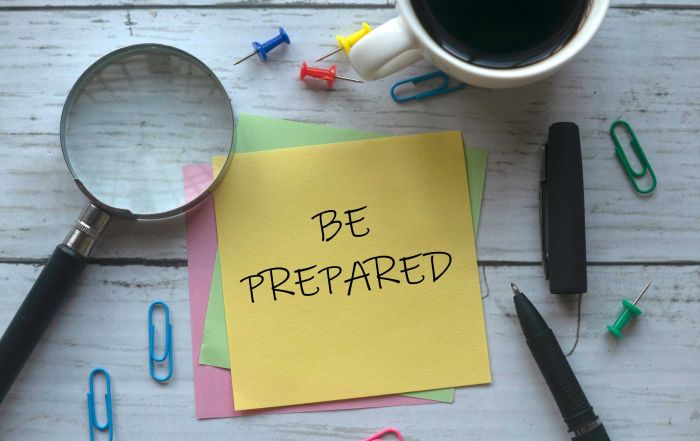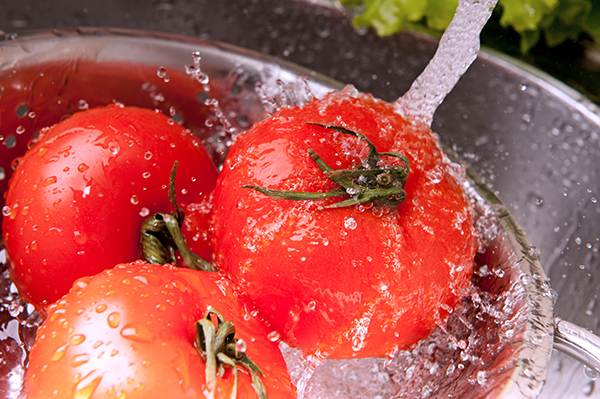WWUD IF …? Common Emergency Scenarios in Foodservice Operations
It is cold outside, at least here in the Midwest! Here’s hoping the water pipes don’t freeze or the wind doesn’t blow down power lines causing us to lose electricity! What would we do if these types of emergencies were to happen?
Having an emergency plan in place helps foodservices facing these situations, or other types of emergencies, be prepared. In our first blog for this month, we covered some of the basics in developing an emergency preparation plan. In this blog, we will review some of the action steps to take in a few “typical” emergency situations: flooding, water disruption, and fire. Hopefully your foodservice never has to respond to any of these, but just in case, it is good to have a plan ready that will provide guidance in responding. Have the plan reviewed by the local health authority to ensure it is compliant with regulations and get approval.
Flooding. Unfortunately, several parts of the country, including western Iowa, experienced multiple flooding occurrences this last spring. Broken pipes in a foodservice could also cause flooding. Obviously, suspension of operations needs to occur so that cleaning and sanitizing can take place. Local health inspection may be needed before reopening. Not all foods need to be discarded but those in contact with the flood waters and any food or supply item (such as paper goods) do. If in doubt, throw it out! Any food packed in plastic, paper, cardboard or similar materials should be discarded. Same with any food or beverage items with screw caps, snap lids, crimped/twist caps, and flip tops. Undamaged, commercially-prepared foods in all metal cans or retort pouches can be saved if labels are removed, cans are thoroughly washed and rinsed, followed by disinfecting with 1 tablespoon of regular bleach per gallon of potable water (50 to 100 ppm concentration). Relabel containers as needed with necessary information, such as expiration date.
Water disruption is a likely emergency scenario in foodservices at some point. This can happen from natural causes or because of the actions of humans. Recent versions of the Food Code require foodservices to have a written plan addressing procedures to follow should this occur. What to do? Having disposable service ware on hand is a good preparation strategy. The biggest challenge with disruption of a potable water supply is ensuring hands are washed when and how they should be – it’s kinda hard to get hands clean with soiled water! A foodservice will want to check with local regulatory authorities as to whether alternative strategies, such as double hand sanitizing, is allowed. Or whether the foodservice can stay open IF only packaged foods are served by staff with gloved hands. If the disruption is long lasting, such as during a hurricane, potable water may be trucked in to locations. If that is the case, then a foodservice could use disposable service ware and set up a portable handwashing station. Most health agencies have guidance on how to set up these stations.
Fires from sources outside the foodservice, or that originate inside the operation, are a potential concern. For a foodservice recovering from a fire, there are concerns with the safety of the food because of the heat, fumes from the fire, and/or toxicity from the chemicals from fire extinguishers. Food packed in cans and jars that have been close to the heat of the fire may not be safe because the high temperatures can activate food spoilage bacteria. Fumes from burning materials may permeate packaging of food items, particularly cardboard and plastic containers, which contaminates the food. And, the chemicals used to fight fires are toxic. So any exposed food should be discarded. Canned goods, equipment, utensils, and other food contact surfaces must be cleaned and sanitized before the operation re-opens. As with other response plans, check with your local health agency to see if an inspection is needed before resuming operations.
We noted in the first blog resources that are available to use in crafting your operation’s emergency preparation plan. Being prepared is good business. Having a written emergency plan guides actions, therefore minimizing the risks from improper responses. It is recommended that an emergency kit is kept in all households (flashlight, batteries, phone list of contacts, bottled water, nonperishable food, blankets, medications, candles, matches, along with first aid and pet supplies) and that a “go bag” be ready for evacuations. Those of you traveling over the holidays may have an emergency kit kept in the car. While we certainly hope you don’t need to use these, we applaud your forward thinking and being ready. Here is hoping all of our readers have a safe and happy holiday season. Be prepared! Risk Nothing!
READ MORE POSTS
Emergency Preparedness and Responding to a Disaster with Food Safety in Mind
As I write the first blog this month, the realities of the devastation in Florida are coming to light as we also deal with the aftermath of Hurricane Fiona, which impacted Puerto Rico late in September. Recent news has been focused on the recovery efforts for all who have been impacted. Thus, I thought it would be fitting this month to discuss emergency disaster planning resources in our first blog and delve into recovering from a disaster in our second blog later this month.
During National Food Safety Education Month is it time for Your Food Safety Refresher?
You see them in every restaurant and commercial foodservice operation across the United States. Framed and proudly displayed, often by the kitchen, the cashier, the kitchen entrance, or the service counter - just as they should be. To what am I referring? The food safety certification certificates, of course!
Welcome to National Food Safety Education Month!
In September of each year, we not only have the opportunity to celebrate Labor Day, but we also welcome National Food Safety Education Month! It is this time of the year when it is important to remember that Foodborne illnesses are still a major concern in the United States, although I am guessing many Americans don’t think about the safety of the food they eat as they go throughout their daily lives. The statistics show one in every six Americans will suffer from a foodborne illness each year, for a total of about 48 million cases each year.
Protecting Fresh Produce Post-Harvest, Integral to Safe Food
During the height of the summer, at least in the Midwest, farmers markets are in full swing and fresh produce is plentiful. Every backyard gardener is reaping the benefits of their work, with bountiful harvests of tomatoes and cucumbers. Everyone seems to have a neighbor who is trying to pawn off his or her over-production of cucumbers or summer squash during this time of year. When picking up that produce at the farmer’s market or from your neighbor down the street, have you ever given any thought to the microbial safety of it? Honestly, even in my position, it certainly is NOT the first thing that comes to my mind. But, earlier this month, I came across a news story out of Wisconsin discussing a Salmonella outbreak associated with shelled peas sold at a local farmers market. Who would have thought shelled peas would be impacted? The story noted, and it served as a great reminder, that most outbreaks associated with Salmonella in produce are due to mistakes made in handling or transportation of produce after harvesting.










